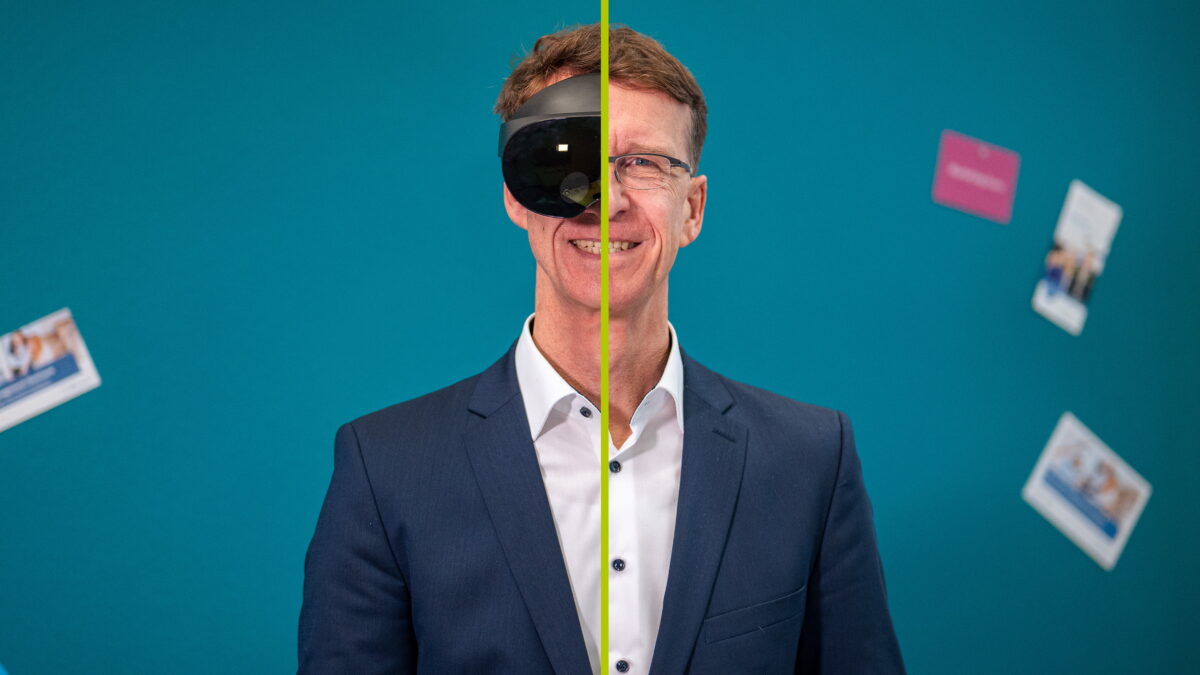Study: Are VR meetings better than video meetings?

Originally, we wrote that the study had found that "Zoom and Co. are more productive". This is inaccurate and we have clarified some parts of the article and included a direct quote from the study for better understanding.
We apologize for the mistakes.
It's Meta CEO Mark Zuckerberg's big bet: virtual reality meetings will one day surpass traditional video meetings - and possibly even real meetings. What's the state of play?
Since Corona, there has been a worldwide boom in online meetings and web conferences in everyday school and work life. As most of these meetings take place in two dimensions, e.g. via Teams, Webex or Zoom, scientists at the University of Muenster ask themselves the following research question: Does virtual reality make meetings more productive and are team outcomes better with VR headsets than with Teams, Zoom and other 2D meeting platforms?
Multisensory interaction in real time
Virtual reality enables, as the researchers put it, multisensory social interaction in real time (RMSI). VR users act and communicate with other people in real-time thanks to avatars that see, hear and feel, for example through vibrations of the VR controllers or by visually conveying a sense of space. The virtual encounter you know from Zoom and Co. is thus extended by further sensory perceptions in virtual reality.
Marketing professor and VR researcher Thorsten Hennig-Thurau and his colleagues at the University of Muenster wanted to know whether virtual meetings in a 3D environment move participants more emotionally, whether teams are more creative and how well they work together. The test subjects were asked to work together productively and creatively, and to watch films together.
300 students test (VR) meetings
The researchers randomly selected more than 300 business students from the University of Muenster and divided them into three groups of around 100 participants each. The first group meets with VR headsets in the social VR apps Glue, Altspace VR and Bigscreen VR.
In an interview with MIXED, Professor Hennig-Thurau speaks somewhat tongue-in-cheek of a "logistical masterpiece." Since the university only has 30 Meta Quest 2s at its disposal, the team first sends the VR headsets to part of the first group. After cleaning, the devices are then distributed to the next group of test subjects, and so on.
The second group meets in 2D via Zoom and Watch2gether. The third group uses social VR apps like Altspace VR in 2D on the normal monitor.
The authors of the study emphasize that all participants meet from home. The conditions should be as realistic as possible and include all possible difficulties, such as a poor Internet connection.
VR has better sense of presence, but is not more productive
The first finding is hardly surprising: in VR, the perceived social presence of participants is more pronounced than in 2D meetings, which has a positive impact on meetings. Participants reported that in VR they had the feeling of being together in one place and a sense of closeness. 3D rooms visited on the monitor generate the lowest social presence.
Another positive factor is the mobility in VR, which does not exist in this form in 2D meetings. This provides more fun and engagement during meetings and makes them more creative, participants said.
However, looking and walking around in the 3D environment also distracts participants, the researchers note. The static environment of classic 2D meetings increases concentration.
The researchers also examined the exhaustion caused by the session variants. Here, virtual reality performed the worst, and exhaustion was particularly high among participants wearing VR headsets. Among the reasons given by the students were the weight distribution of the VR headsets and the poor graphics in some cases.
At the beginning of the study, Hennig-Thurau's team still expected VR to outperform Zoom and Co. in all areas. But in the sum of the empirically examined effects, VR meetings did not yet beat 2D meetings. However, the researchers also find no significant difference. The study states:
"These results suggest that the value of RMSIs in the new virtual environment is not generally superior to meetings via 2D environments (e.g., Zoom) and underscore the need for a more fine-grained investigation."
VR meetings: What is missing?
Why VR meetings don't yet work better than 2D meetings is subject of future research. The scientists suspect, among other things, that there could be negative effects due to the less realistic representation of the participants as avatars. Some people also felt too isolated from the physical world in VR meetings.
The researchers cannot yet provide empirical evidence for this. The researchers also still disagree on whether better technologies can improve the productivity and quality of VR meetings. It is much more important to improve the functionality and design of VR meetings, says Hennig-Thurau.
Note: Links to online stores in articles can be so-called affiliate links. If you buy through this link, MIXED receives a commission from the provider. For you the price does not change.